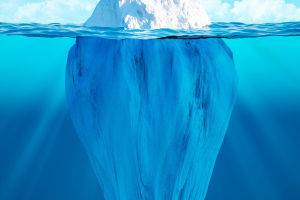Wind Energy Insights
Wind energy is a form of renewable energy. Its use helps reduce reliance on fossil fuels, lowers greenhouse gas emissions, and mitigates global warming.
This article will delve into the basic principles, technological applications, advantages, and challenges of wind energy.
Basic Principles
The utilization of wind energy is based on the principle of converting wind’s kinetic energy into electrical energy. Wind is caused by the difference in air pressure between different areas of the Earth's surface.
Wind turbines capture the kinetic energy of the wind with their blades, converting it into mechanical energy, which is then transformed into electrical energy by a generator. The main components of a wind turbine include the rotor blades, the main shaft, the generator, the gearbox, and the tower.
Technological Applications
Wind energy technologies can be divided into two main categories: onshore wind power and offshore wind power.
1. Onshore Wind Power
Onshore wind power refers to installing wind turbines on land. This technology is well-established and relatively low-cost.
Onshore wind farms can be located in areas with abundant wind resources, such as mountains, plains, or coastal areas. In recent years, with technological advancements, the power output of onshore wind turbines has increased, significantly enhancing the generation capacity of individual wind farms.
2. Offshore Wind Power
Offshore wind power involves installing wind turbines in the ocean. Compared to onshore wind power, offshore wind power benefits from higher wind speeds and more stable wind conditions, leading to higher efficiency.
However, the construction costs for offshore wind power are higher due to the challenges in installation and maintenance. With recent technological improvements and cost reductions, offshore wind power is becoming an important direction for wind energy development.
Advantages
1. Environmental Benefits
Wind energy is a clean source of power that does not produce carbon dioxide or other greenhouse gases and does not contribute to air pollution.
2. Renewable
The source of wind energy is the ever-renewable wind. Unlike non-renewable resources such as coal or oil, wind energy does not diminish with use and can be utilized continuously.
3. Reduced Dependence on Fossil Fuels
Utilizing wind energy can decrease dependence on fossil fuels and lower energy supply risks. By diversifying the energy mix, countries and regions can enhance energy security and reduce reliance on imported energy.
Challenges
1. Intermittency
A major challenge of wind energy is the variability of wind. Wind speed and direction can change over time and location, which may lead to unstable power generation. Although modern wind turbines are equipped with advanced control systems to optimize efficiency, further improvements are needed to enhance the stability and reliability of wind energy.
2. Environmental and Ecological Impacts
Although wind energy itself is environmentally friendly, the construction and operation of wind turbines can still impact the environment.
For example, large wind farms might harm birds and bats and affect local ecosystems. Therefore, it is essential to assess and mitigate these potential impacts during the planning and construction of wind projects.
3. Visual and Noise Pollution
Wind turbines produce some noise and visual impacts during operation. Although these effects are generally considered minor, they can become a concern in densely populated wind farm areas. Therefore, these factors must be carefully considered in the siting and design of wind projects.
Conclusion
As a clean and renewable energy source, wind energy plays a crucial role in global energy transition and climate change mitigation.
Despite some challenges, technological innovations and scientific planning can further unlock the potential of wind energy. With ongoing advancements and decreasing costs, wind energy is expected to play an increasingly significant role in the future energy landscape.


